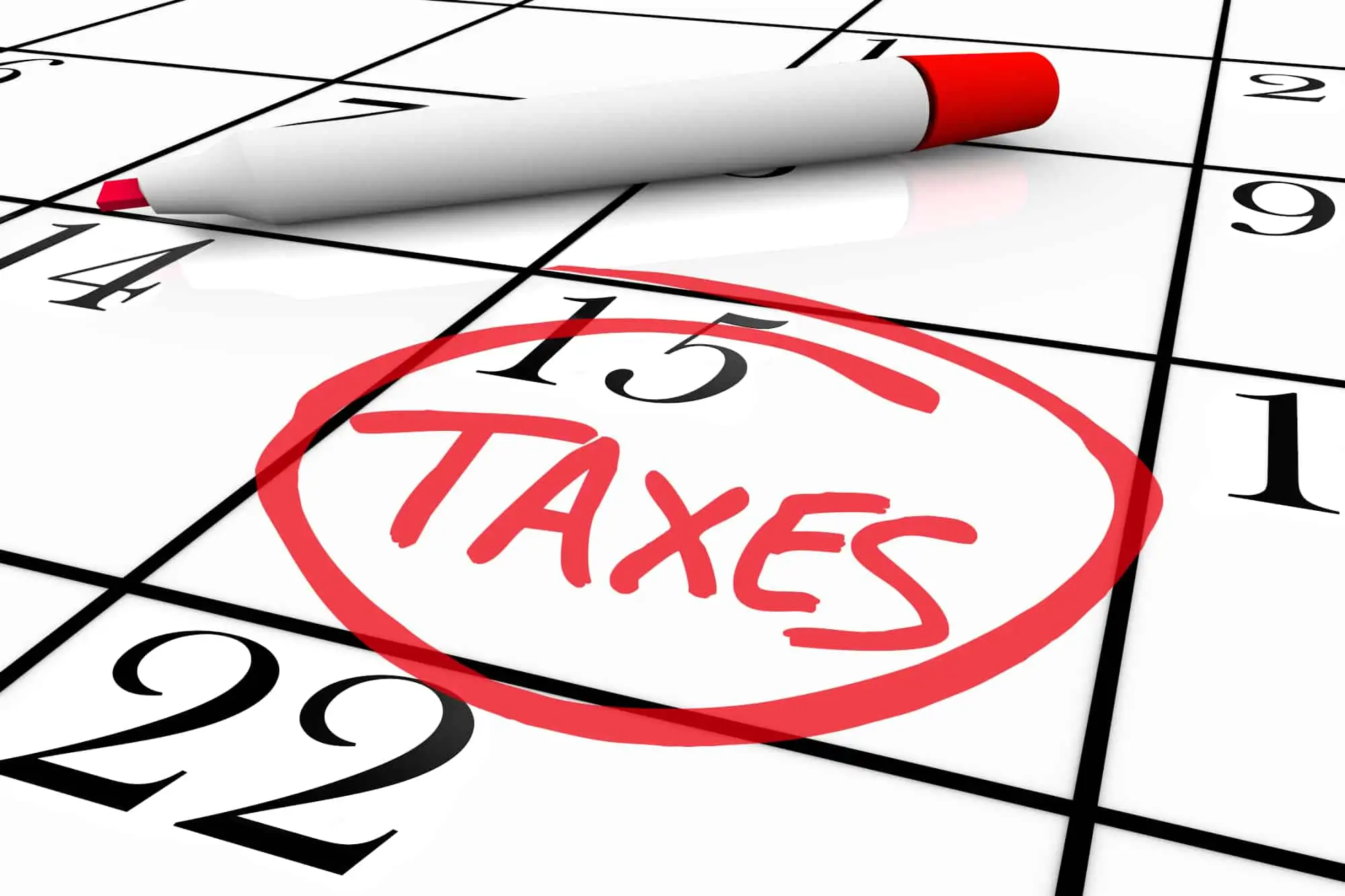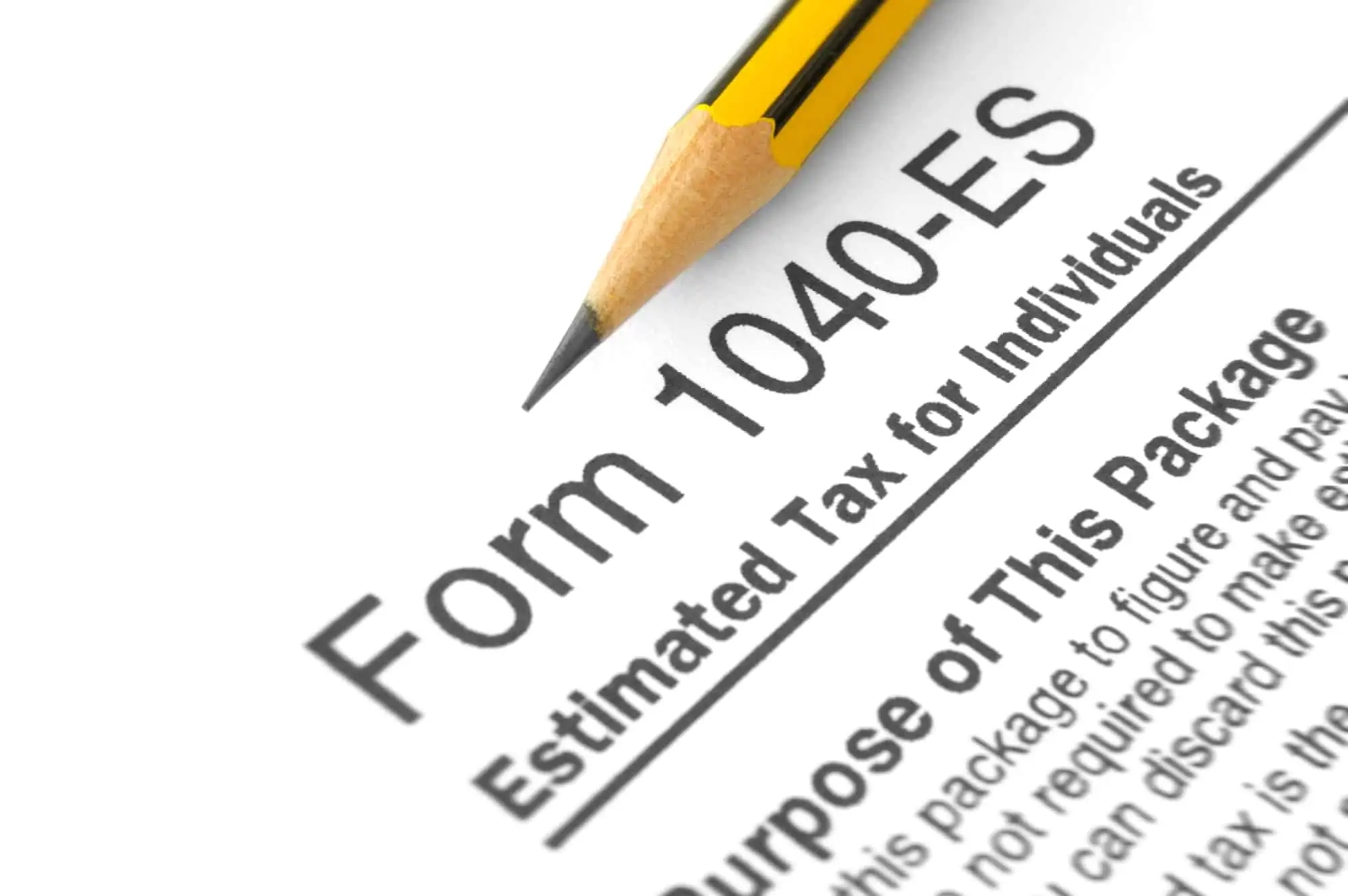Self-Employment Tax: What Most People Fail To Address
This post may have affiliate links. Please read the Disclosure Policy for complete details.
So many people talk about being a business owner.
I’m sure you’ve seen the stories of “how to escape the rat race”.
Or how about “X number of businesses to start in a weekend”.
How many of them ever mention the self-employment tax?
In my experience, not many (if any!).
That’s a HUGE problem.
It can lead to a large amount due with the filing of your income tax return.
And that’s never fun.
So, before you get too far into your entrepreneurship journey –or if you happen to be doing your due diligence before starting a business–let’s go over everything you need to know about self-employment taxes.

What Is The Self-Employment Tax?
You most likely already know the answer to this question but don’t know that you do.
Self-employment tax consists of:
- Social Security–old-age, survivors, and disability insurance (officially OASDI)
- Medicare–hospital insurance
These are the same Social Security and Medicare taxes that you were used to seeing being deducted on your paystubs as an employee.
The big difference is what you don’t see:
When you are an employee, your employer matched your contributions each time they would run payroll.
Since you are the employee and employer, you are now paying both parts.
(If you’ve heard of a “deduction” for the employer half of self-employment tax, keep reading, as I’ll address that later)
Calculating Self-Employment Tax
This can get a bit complicated based on the circumstances.
In the simplest terms, calculating self-employment tax is rather straightforward:
- Net Income x 92.35%
- Result from #1 x 15.3%
That assumes the net income is less than the Social Security tax cap.
If you are over that limit in profits, then the calculation becomes:
- Net profit x 2.9% (just the Medicare Tax portion)
- Above result + maximum social security tax (ie: $17,074.80 for 2020)
Then you have different situations like a married couple filing jointly with each spouse having self-employment income or clergy as well as other situations.
To learn more about those situations (which are less common for our purposes) and to see what changes are made to the form each year make sure to bookmark and refer to Schedule SE.
On top of that, if your income exceeds a particular amount, scroll down a couple of sections to learn about the Additional Medicare Tax which you should also be aware of.
Calculating Net Income

This is a very important point, so pay close attention.
The net income calculation for self-employment tax purposes is sometimes misunderstood.
To be fair, most people don’t even know how their regular paycheck calculations work, and that’s much simpler!
Specifically, it’s net business income, so it doesn’t include any money you made selling personal items, birthday gifts, or money friends give you for splitting the bar tab.
It’s also not a matter of simply subtracting business expenses from your business income.
Here is the most important, and often misunderstood part of the net income calculation…
What are actual business expenses?
The reason this is so important is that there are two line items that are often mistakenly reported as business expenses which cause people to calculate self-employment tax on the wrong basis.
The first item we need to address is the owner’s draw, the manner by which you “pay yourself” when you’re self-employed.
This is not a salary, so it’s not supposed to be listed as an expense in your bookkeeping program.
The second is the money you pay for health insurance premiums.
When you’re self-employed you can claim the self-employed health insurance deduction which goes on Schedule C of your 1040 (if you qualify for it).
These premium payments shouldn’t be coming out of the business account, much less being recorded as a business expense.
When you are careful in what you include (as well as exclude) from your net income calculation, you will have a much more accurate self-employment tax figure.
You should always be careful when blindly using the calculation from QuickBooks Self-Employed or whatever other programs you use that calculates the self-employment tax for you for these exact reasons.
Social Security Tax Is Capped
There is some good news, however.
No matter how much you make, there is a limit to how much you will pay in Social Security taxes.
For example, in 2020 (assuming no exceptional steps are taken) you will pay Social Security tax on the first $137,700 of net income.
Anything over that you don’t pay in anymore for the rest of the calendar year.
Unfortunately, if you work a job that gives you a payroll check, you will have to pay up to the Social Security limit on each side, then claim the overpayment on your income tax return.
Another bad thing is…
You May Owe Additional Medicare Tax
Unfortunately, there is a “new” wrinkle in the world of employment tax called the Additional Medicare Tax.
As part of the Affordable Care Act (ACA), beginning in 2013 people who earn over a specified amount are required to pay, well, an additional medicare tax.
Similar to the “new” laws about when you should file 1099-NEC forms for your independent contractors, some accountants might not be up to date with this info so it’s important that you know it!
This Additional Medicare Tax is .9% on top of the standard 1.45% for Medicare Tax on those wages/net income from self-employment.
The wage thresholds are as follows:
| Filing Status | Threshold Amount |
|---|---|
| Married Filing Joint | $250,000 |
| Married Filing Separate | $125,000 |
| Single | $200,000 |
| Head of household (with qualifying person) | $200,000 |
| Qualifying widow(er) with dependent child | $200,000 |
Quarterly Tax Due Dates

This one is a bit confusing.
The way the quarterly tax due dates line up catches many people by surprise, particularly if you are brand new to self-employment taxes.
You’d think that being called “quarterly” that self-employment tax would be due, well, quarterly!
Unfortunately, the person (or persons) who came up with the schedule decided it shouldn’t make any sense.
The first quarter actually is a calendar quarter, being January 1 through March 31.
The second quarter is only two months, April 1 through May 31.
The third quarter is back to three months, June 1 through August 31st.
And the fourth quarter is four months long, September 1 through December 31.
Oddly enough, each of the 2nd, 3rd, and 4th quarters actually match the number of months.
That being said, quarterly tax due dates are as follows:
- Q1: April 15th
- Q2: June 15th
- Q3: September 15th
- Q4: January 15th of the following year
Now, this schedule only counts if the due date falls on a business day.
If any of the quarterly tax due dates fall on a weekend or a holiday, the payment will then be due the next business day.
Paying Your Self-Employment Tax

Paying self-employment tax sucks, but it’s easy lol.
There are a number of ways you can go about paying them:
- IRS Direct Pay
- EFTPS
- Paper Check
- Debit/Credit Card
Each method has its advantages and disadvantages, naturally.
IRS Direct Pay
Using IRS Direct Pay is pretty simple and comes from your bank account.
You go over to the Direct Pay page and click the make a payment button.
From there you use the dropdown sections to choose the reason for the payment (in this case Estimated Tax), the tax form, and the period for which the payment should be applied.
You then enter your verification and bank information to complete the payment.
The downside is that you must manually enter all of your info each quarter, as this system doesn’t store anything.
Also, you need to have your confirmation number to look up a past payment so make sure to keep track of those confirmations!
EFTPS
EFTPS stands for The Electronic Federal Tax Payment System.
It’s similar to Direct Pay, except for a few noticeable differences.
First, the EFTPS is a registration-based system: you need to sign up for an account that takes 5-7 but all of your info is stored meaning you only have to log in and set the payment info.
The other big difference is that the EFTPS system keeps a 15-month history of your payments, so you don’t have to worry about keeping track of payment confirmations.
Paper Check
The most common and long-standing method of paying self-employment tax (and all taxes, really) has been with a paper check and coupon.
It’s probably the simplest method to pay self-employment taxes as well.
All it takes is filling out a form 1040-ES coupon for the current quarter and writing a check and you’re done…just have to get an envelope and stamp to send it off.
Of course, you have to have checks, stamps, and envelopes available and/or be willing to head over to the post office to use this method of paying your self-employment tax.
Debit/Credit Card
You do have the option to make your self-employment tax payment with a debit or credit card.
The IRS itself doesn’t have a hand in any of the processing, outsourcing it to a few “trusted” companies instead.
Some people will prefer to make their payments this way to take advantage of point-earning opportunities.
You do have to be aware, however, that the third-party processors do charge fees based on the amount you pay and the type of card you use.
It is a bit odd that the IRS itself doesn’t accept credit cards, but that’s a story for another day, the Service already has enough bad press to deal with?
Don’t Forget About Estimated Quarterly Income Taxes
A lot of people will get wrapped up in the calculation and payment of the self-employment tax.
That’s completely understandable, but you can’t forget about federal and state income taxes either.
Especially when you consider the fact that self-employment tax is strictly a federal tax so the state tax is usually forgotten about entirely.
While these are separate taxes, you still need to make estimated quarterly tax payments for your federal and state returns as well.
So why not take care of all of these estimates in one fell swoop?
It will keep you on the favorable side of the IRS and your state revenue agency, and there’s one simple truth about tax payments:
It’s always easier–mentally, emotionally, and physically–to make smaller, quarterly estimates than it is to have to come up with a huge chunk to send in with your return.
Deducting Half Of The Self-Employment Tax
Ok, so remember when I said that we would come to the part about deducting half of the self-employment tax…well, we’re here!
A company that has payroll has to match the employees’ Social Security and Medicare taxes.
Because you are both the employer and employee, you are paying both upfront.
That’s why the calculation is 15.3%:
6.2% x 2 = 12.4%
1.45% x 2 =2.9%
And because you are your own “employer” you also get the benefit of deducting half of the self-employment tax on your own income tax return.
Like anything, however, there is a catch!
This is simply a deduction and not a credit, so you aren’t reducing your tax liability on a dollar-for-dollar basis.
Instead, you are only reducing your taxable income.
But it’s still not a bad deal!
Wrapping Up
I’m sure a lot of you will be surprised at all of this information, and that’s ok, you aren’t alone.
A lot of people come to me to be their tax preparer and are shocked when I tell them about their large tax bill because they didn’t pay self-employment taxes.
Heck, some don’t even know that need to pay state income taxes.
That’s the problem with the internet–a lot of the content is there just to sell something, not to inform.
Just make sure that you are putting money aside to pay self-employment taxes each quarter and pay them on time.
And if you are still confused after reading this, please make sure to get in touch with a professional to put you on the right path.
Your Turn
Are you self-employed or have a side gig? When you started did anyone ever talk about self-employment taxes or did you find out the hard way?
